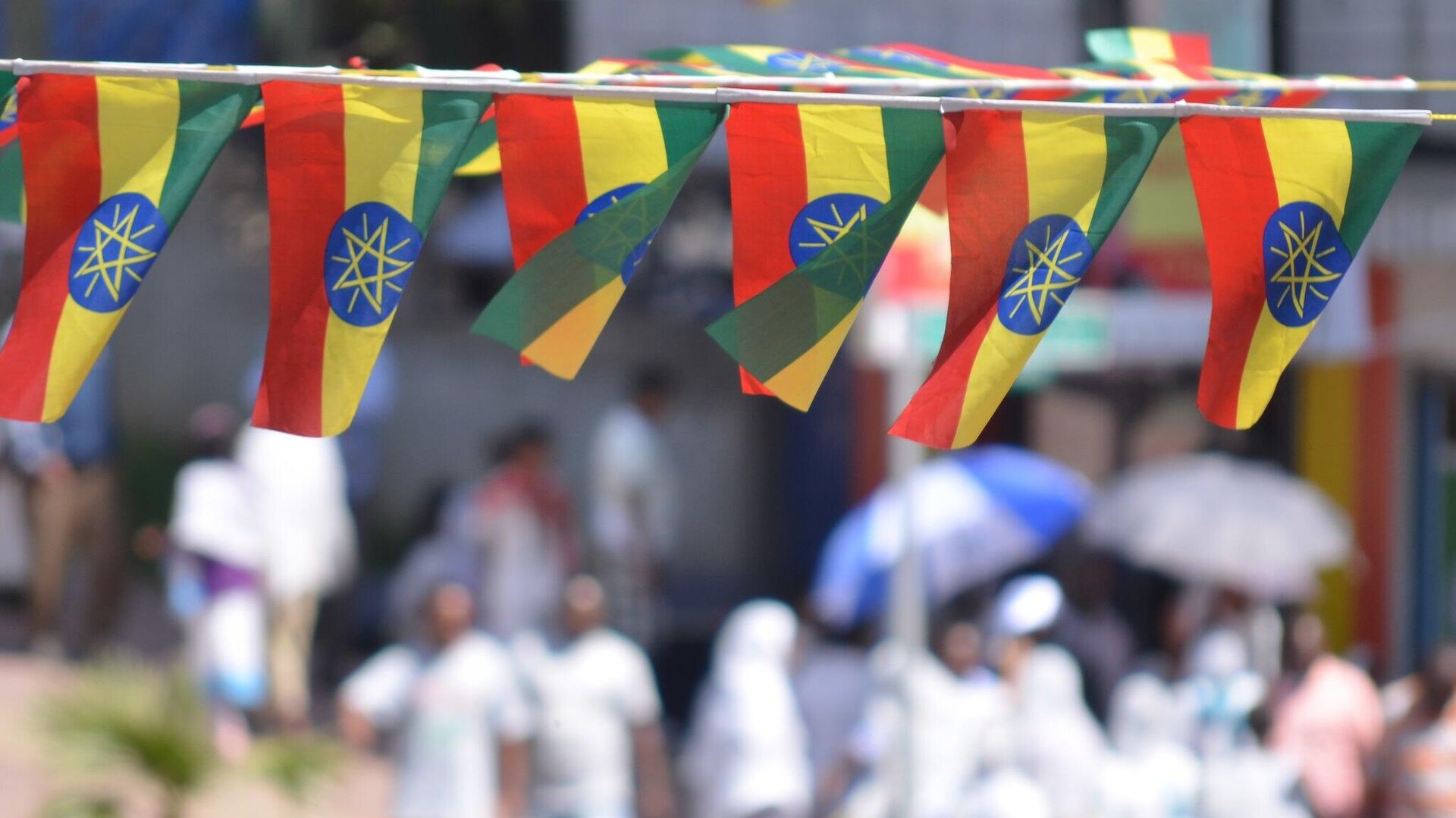Ethiopia Accuses TPLF of New Attack on Western Tigray as Insurgent Group Claims Eritrean Invasion
21:01 GMT 01.09.2022 (Updated: 11:37 GMT 23.11.2022)

© Flickr / Global Panorama
Subscribe
In another round of confusing back-and-forth accusations, the Ethiopian federal government and the Tigray People’s Liberation Front (TPLF), the governing force in Tigray state, have both claimed the other side has launched a new attack in western Tigray.
A day after the Ethiopian government accused the TPLF of beginning a new westward drive toward the Sudanese border, the TPLF has accused Ethiopia and Eritrea of launching an invasion of its territory in almost the same area.
“The TPLF clique, which cannot survive without war, has launched an invasion in the direction of Wag, Wolqait, and our border areas with Sudan,” Ethiopia’s Federal Communications Service said on Wednesday.
TPLFs belligerence is forcing the hands extended for peace to recoil.
— FDRE Government Communication Service (@FdreService) August 31, 2022
A statement by Government Communication Service on current affairs pic.twitter.com/WsyF3BFPnv
The area in question is formally a western part of Tigray state, although only because when the TPLF took power in Ethiopia in 1991, they annexed parts of Amhara state into Tigray, including the four westernmost districts. The Ethiopian National Defense Force (ENDF) has remained in control of those districts throughout the two-year-long war with the TPLF that began with a TPLF sneak attack on ENDF forces in Mekelle in November 2020.
That, too, is claimed by both sides to have been perpetrated by the other side.
The offensive is in keeping with trends reported inside Tigray in recent weeks, pointing to a massive shifting of men and materiel along the B30 highway in the west, and the A2 in the east, prior to the outbreak of hostilities on August 24.

A user-generated map of the Ethiopian conflict on September 1, 2022, shows the borders of Tigray and surrounding states, as well as Eritrea (blue) and Sudan (gre3n), the areas of Amhara and Afar occupied by the TPLF (orange,) and the areas of western Tigray occupied by Ethiopian federal troops (yellow).
TPLF Claims Eritrea Re-Entered War
On Thursday, the TPLF levied its own accusations in western Tigray, claiming that the ENDF had positioned forces inside Eritrea and launched a “joint” invasion near Adyabo.
“The enemy has begun a massive offensive towards Adyabo in four directions. The centerpiece of the enemy’s offensive consists of attacks from Fiqya Gebre to Ademeyti; from Selamo to Sheraro; from Gobo Tsin’at to Adi Aser and Irdi Mathias; and from Adi Goshu to Adi Aser,” the Tigray Military Command said in the statement.
“The enemy, having already relocated a massive military force to Eritrea, has now begun a joint campaign with the foreign invading force of Eritrea to brutalize and exterminate the people of Tigray,” it added.
Statement by Tigray Military Command
— Tigray External Affairs Office (@TigrayEAO) September 1, 2022
1 September 2022 pic.twitter.com/gjn191K7xZ
As Reuters noted, verifying the TPLF’s accusations is nearly impossible, although there has been some fighting near Sheraro in the past, including a brief break in the ceasefire in May when Eritrean artillery killed several people in the town and the TPLF responded with attacks that it said killed 300 soldiers.
When the TPLF was in power in Addis Ababa, it waged a 20-year war against Eritrea that killed roughly 100,000 Eritreans. When Ethiopian Prime Minister Abiy Ahmed came to power in 2018, marking an end to TPLF rule, he immediately made peace with Eritrean President Isaias Afwerki, for which he won a Nobel Peace Prize. Their newfound alliance meant that when the TPLF launched its attack on the ENDF in November 2020, it also attacked Eritrea, firing ballistic missiles at the capital of Asmara and several other cities.
In an interview in January with Eritrean television following the ceasefire with the TPLF, Isaias seemed to indicate a willingness to intervene in Ethiopia again if its stability were threatened.
“[D]evelopments in every country in this region affect Eritrea, but relatively speaking, Ethiopian developments affect us even more directly, which is why we remain committed to its stability and its people's wellbeing,” he said.
Thursday comments on Twitter by Eritrea’s ambassador to Kenya, Beyene Russom, also seemed to indicate that Eritrean forces were involved in fighting in Tigray.
Calling the TPLF attack a “mistake,” he said it “won’t have a chance to make another mistake,” adding: "Victory to the Eritrean Defense Forces and the people of Eritrea is inevitable."
Five Months of Peace Ended
Since hostilities were renewed on August 24, TPLF forces have advanced southward into Amhara state along the A2 highway corridor, seizing the town of Kobo and threatening the larger, regional hub of Woldiya. Fighting was also reported in nearby areas of the countryside, and TPLF forces also invaded adjacent parts of Afar state to the east.
The group said the advances were part of a “counteroffensive” after a weak Ethiopian attack along their southern front. However, it also came shortly after the United Nations World Food Program (WFP) accused the TPLF of stealing 570,000 liters of fuel intended to power its cargo trucks that are bringing food aid into Tigray.
In a statement, the TPLF didn’t deny taking the gasoline but said it was collecting on a debt owed to them by the WFP. The UN agency has since suspended aid to Tigray, where more than 5 million people are reported as being on the verge of famine.
The attack came after five months of peace, and just as peace talks were slated to begin. After weeks of back-and-forth about conditions, Abiy’s government agreed to meet the TPLF’s demands for restoring basic services to Tigray and to hold the talks in Kenya, with the expectation that the TPLF would come to the table and talk about an indefinite ceasefire and a serious peace settlement. However, days later, the hostilities resumed.



